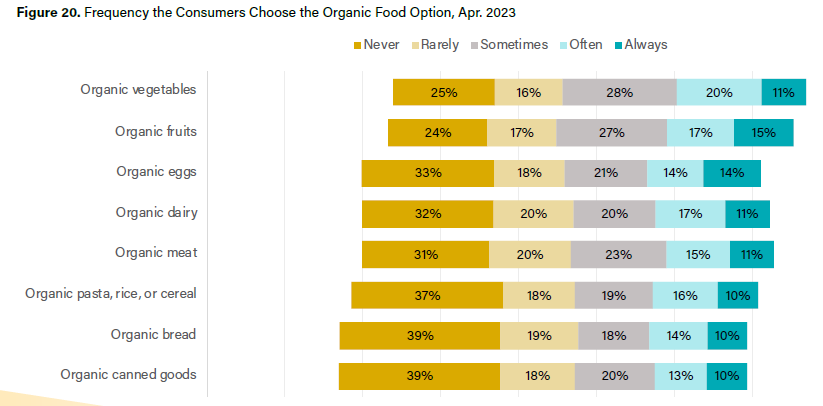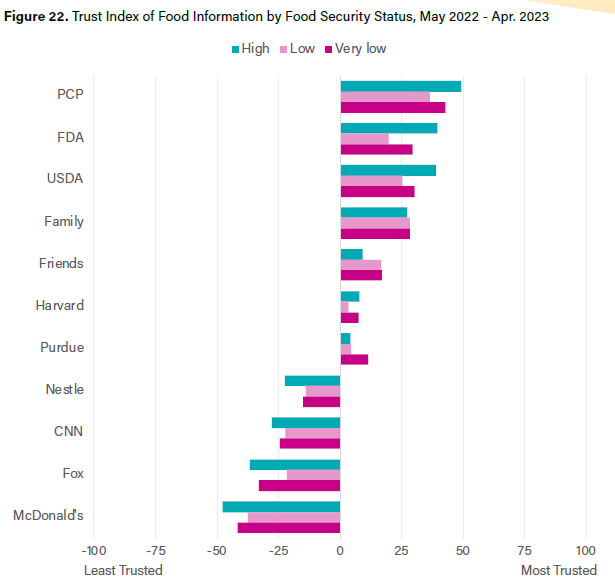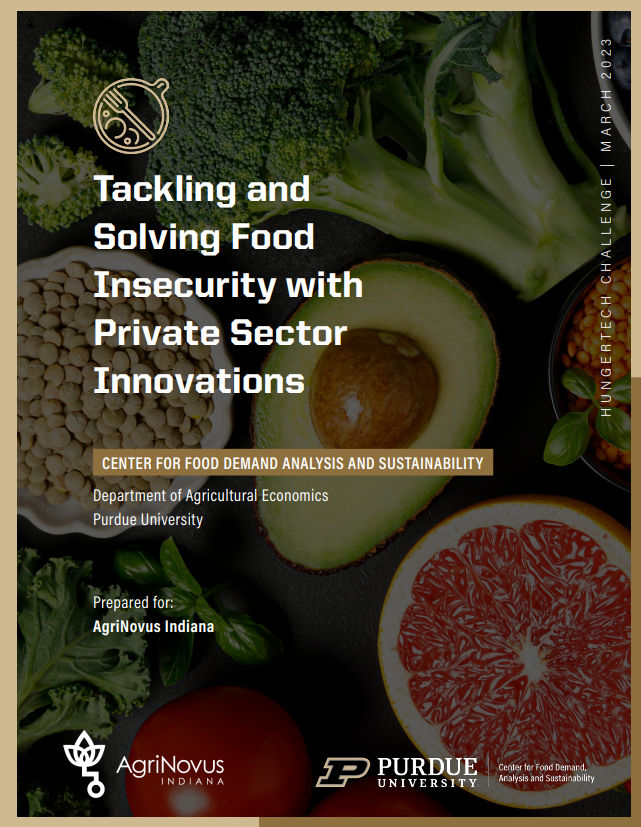The latest edition of our monthly Consumer Food Insights survey is now out. They report conveys the results of the survey conducted in the latter part of April 2023. Here are some of the main findings.
55% of consumers shopped at a dollar store in the past 30 days
Most commonly (30%+) bought snack foods, candy, beverages
About 25% did not purchase food
Consumers tend to live closer to a dollar store than they do to the place they do most of their grocery shopping
About half of consumers said they’d be more likely to shop at a dollar store if it had a more full service grocery section that sold, e.g., fresh fruits and veggies
This month, we asked how often people purchased different types of organic foods (see the figure above). The most commonly bout organic food items were organic vegetables and organic fruits, but even for this just over 30% said they often or always bought organic. The least common categories for organic purchase was pasta, rice, and cereal, bread, and canned goods; for these almost 60% said they never or rarely buy organic.
In terms of our regular tracking questions, we find the following.
Total food spending is up 7% year over year
Consumers report lower rates of food price increases than they have in previous months.
Virtually no change in food insecurity.
We decomposed many of our survey results by people that were high, low, or very low in terms of food insecurity status. Compared to food secure households, households experiencing food insecurity …
had lower sustainable food purchase scores,
placed more weight on affordability when buying food,
were much more likely to be on SNAP and wait to buy groceries or eat out until their next paycheck,
were less likely to be happy with their diets and overall lives (although they remained fairly happy overall), and
less likely to trust food-related information from FDA and USDA.






